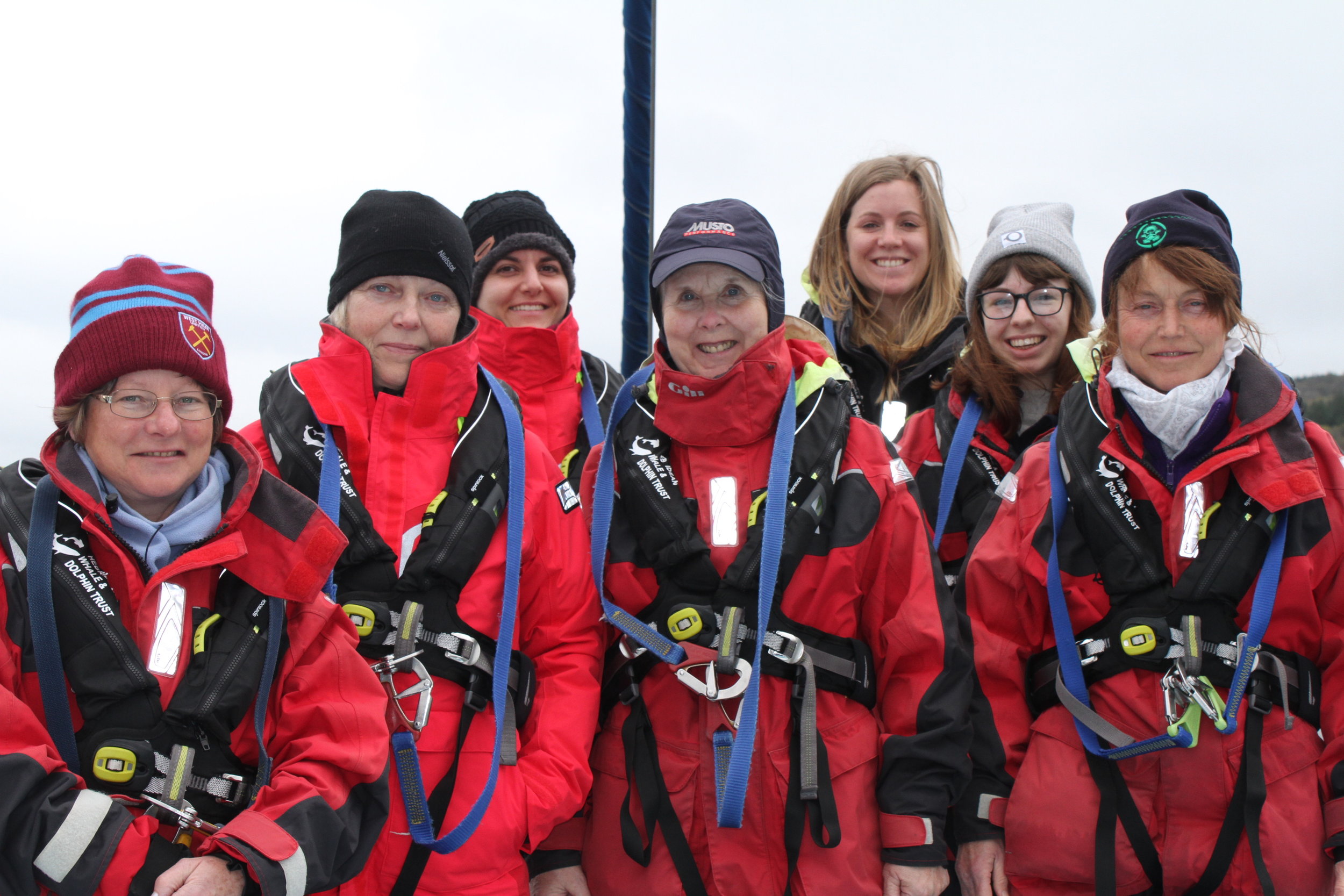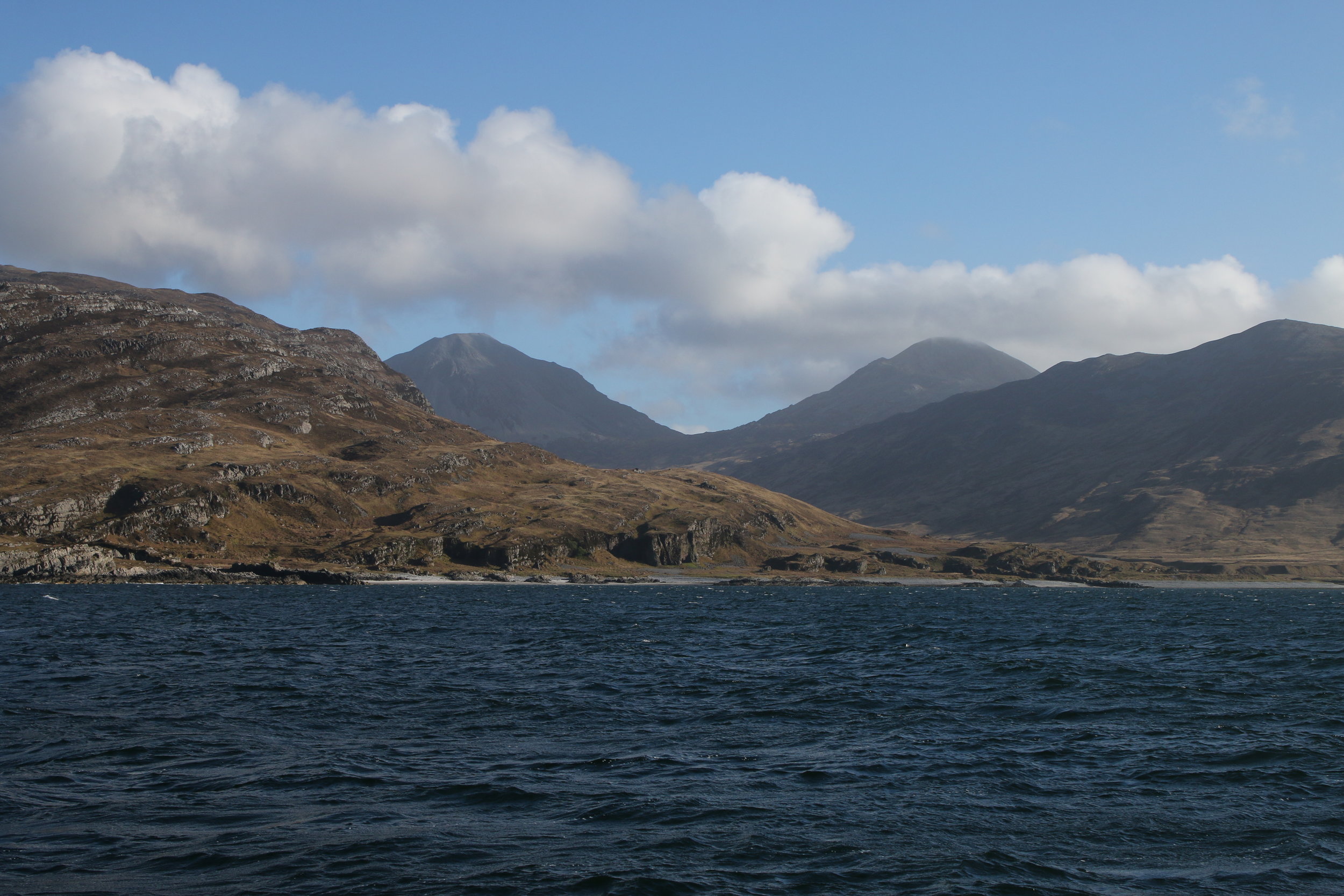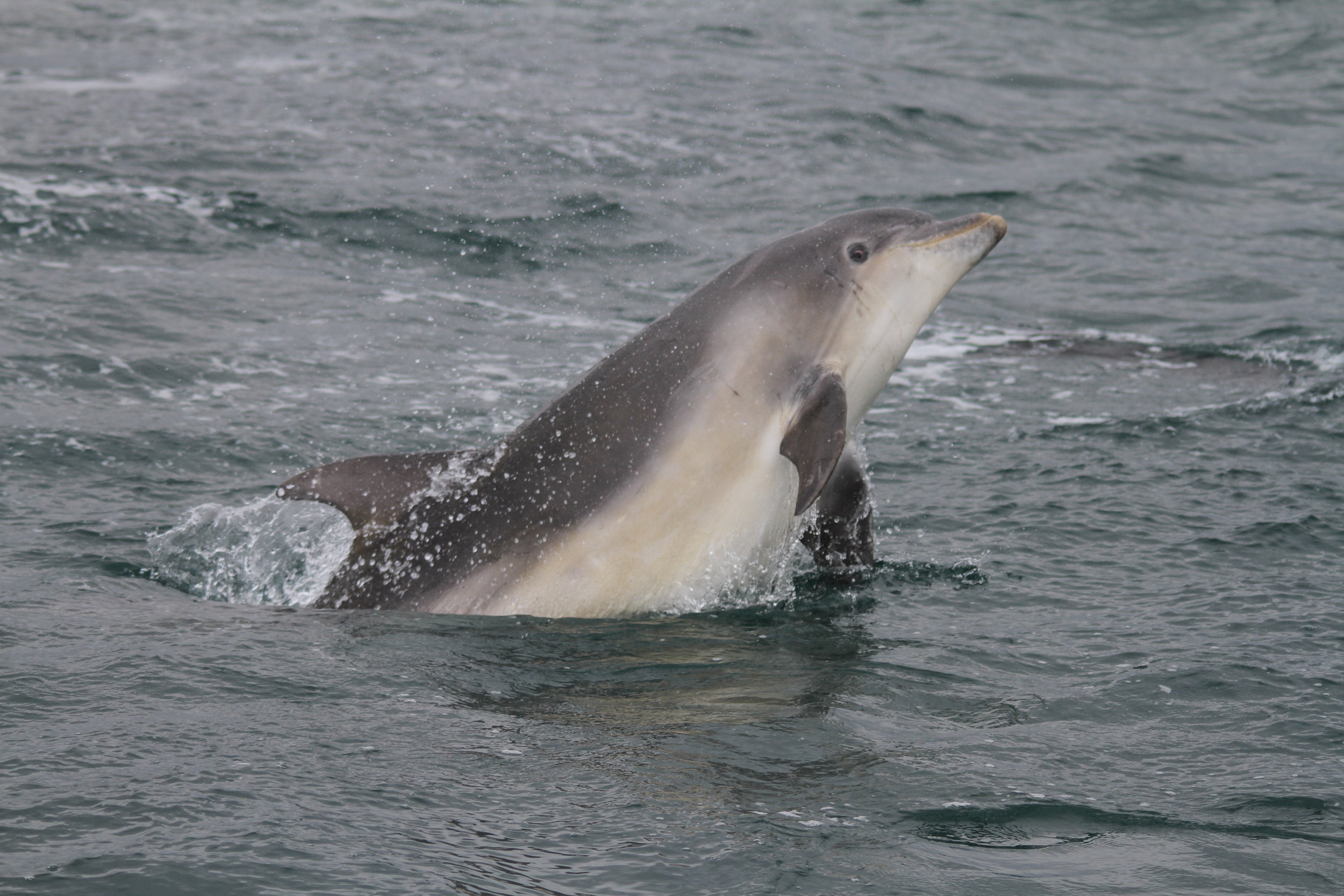Survey Summary: HWDT 3
The amazing citizen science team that joined us on board for HWDT 3.
Our citizen scientists and crew came on board Silurian in Tobermory on the 5th May for the start of HWDT 3. That evening the new team sat down for an amazing bolognaise before learning all the techniques needed to spot and identify the marine megafauna we might be lucky enough to encounter during the survey. We left the following morning full of anticipation for what the week might bring!
During the survey, we covered over 205 nautical miles, spending over 27 hours scanning the waters around Mull, Jura, Islay and Colonsay. Despite some slightly rough days, the team did an amazing job spotting the wildlife, with an endless supply of tea and coffee keeping spirits high, in addition to some of the best homemade cookies Silurian has seen!
The track lines surveyed and anchorages made during HWDT 3
We spent the evenings in some beautiful anchorages, playing games and looking at plankton during one of our infamous plankton parties! A particular highlight was anchoring in inner Loch Tarbert, on the Isle of Jura, one of the most stunning places on the west coast! Our skipper Emma expertly navigated through the tricky entrance, with grey seals, eider and two tysties (black guillemot) greeting us for the evening.
The beautiful island of Jura, one of the many amazing anchorages we stopped at during HWDT 3.
We also had some great marine mammal sightings encountering four different species, including harbour porpoise, grey and common seals and on our second morning bottlenose dolphins. The bottlenose, who were in a particularly playful mood, came over to bow ride to delight of everyone on board. It also gave us a great opportunity to get many pictures of their dorsal fins (the fin on their back) which we use to identify individual dolphins. From these images, we were able to match the animals we saw to individuals from the Inner Hebridean group, which is a group of 30-40 animals that are resident in the area and whose range spans from the Kintyre peninsula up to the Isle of Skye.
One of the eight bottlenose dolphins seen on the survey, who are part of our resident Inner Hebridean population
One of the photos of a bottlenose dolphins dorsal fin, used for photo-identification analysis
As well as the visual sightings, we also gathered valuable acoustic data, with the hydrophone deployed for over 30 hours during the survey. We heard and recorded some wonderful snapping shrimp as well as the not so pleasant acoustic deterrent devices (ADDs) used as seal scarers around fish farms, which were particularly loud in the sound of Mull. One of the recordings collected on this trip can be heard below:
Thanks so much to Barbara, Celina, Diane, Erin, Hazel and Sonja who joined us on board, helping to record all the invaluable data collected during this survey. We couldn’t do it without you!
Thanks also to Scottish Natural Heritage who help fund our Hebridean Whale and Dolphin Monitoring Programme aboard Silurian.
Feeling inspired to get involved with our marine conservation efforts? It’s not too late to join us on board this season! We still have a few spaces on trips this season, including those departing from Ullapool, which give us the opportunity to collect data from the northern reaches of our survey area!





